So you’ve just whipped up a hearty batch of mashed potatoes, and you’re left staring at the pile of peels. If you find yourself wondering if those potato skins could live a second life in your compost bin, you’re not alone.
Potato peelings, like other organic matter, have the potential to transform into golden compost, rich in essential nutrients for your garden soil.
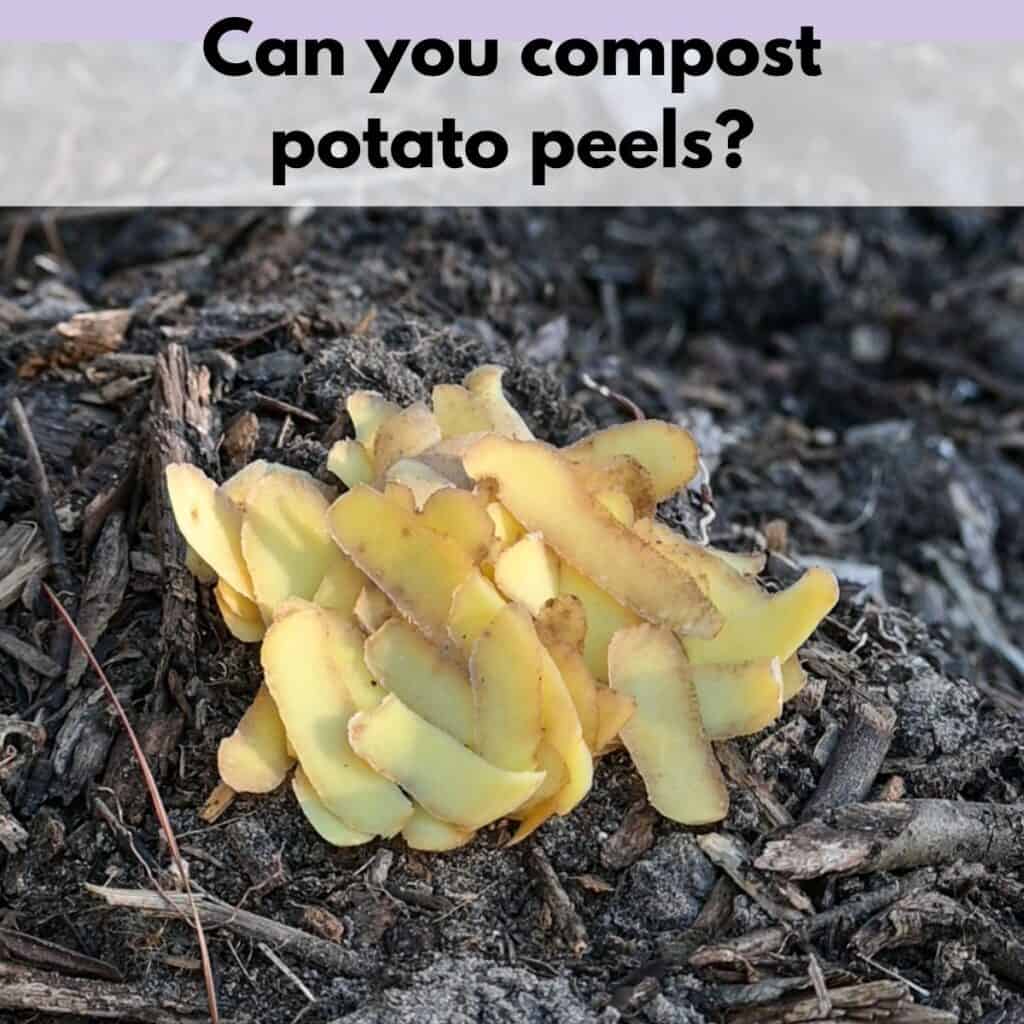
This post includes affiliate links. If you make a purchase using one of these links, Together Time Family will receive a commission at no additional cost to you.
However, there’s a bit of a debate among seasoned composters when it comes to adding potato skins to the mix.
Some gardeners toss them in without a second thought, citing their nitrogen content as a valuable green material to balance out the carbon-rich browns like dry leaves and wood chips.
Others caution against it, fearing the risk of potato blight—a disease that can linger in the compost and affect future potato crops.
Recognizing the best method to compost these kitchen castoffs means navigating between these perspectives and finding a balanced approach that maintains a healthy compost heap.
Key Takeaways:
- Composting Know-How: Potato skins can go from kitchen waste to compost treasure, depending on how you manage them.
- Blight and Balance: Understanding the pros and cons, like the risk of potato blight and the nutrient value of peels, is critical.
- Method Matters: Applying the correct composting techniques can make all the difference in safely breaking down potato peelings.
Please be aware that the advice in this post pretains to composting “Irish” potatoes or “white” potatoes, not sweet potatoes. White potatoes (no matter their actual color), are members of the nightshade family. Sweet potatoes are members of the morning glory family and are in no way related to white potatoes.
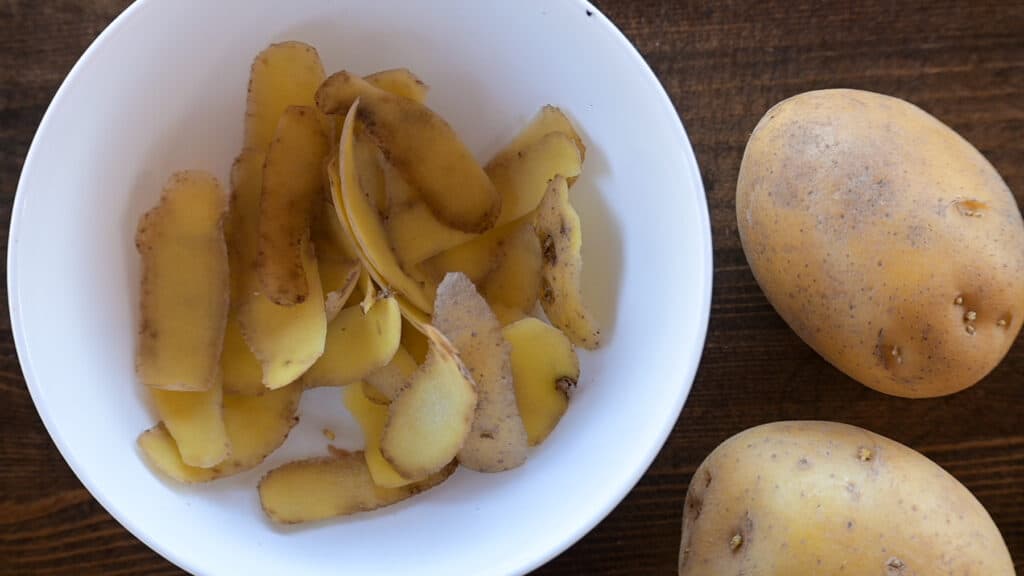
Table of Contents
The Right Way to Compost Potato Peels
You might wonder if those potato skins from your latest culinary adventure can join the vibrant mix of greens and browns in your compost bin. Indeed, they can, but it pays to approach this process with a bit of know-how.
Start by slicing potato peelings into smaller pieces, which hastens their breakdown and assimilates them into the nutrient-rich compost you desire. This approach encourages microbes to work their magic more effectively, speeding up the transformation of organic matter into garden gold.
You can toss them in “whole piece,” as my daughter would say, but make sure to mix them in so they don’t glom to each other and become a stinking mess.
A little diligence goes a long way in guarding against potato blight, which a fungal disease that can o cling to potato skins.
To avoid introducing this unwanted guest to your compost heap, ensure you only compost peels from potatoes showing no signs of blight. Avoid adding potatoes with dark patches/brown spots, which can be signs of blight.
For added peace of mind, and to thwart any lurking fungal spores, maintain your compost at a higher temperature.
Hot composting, achieved by balancing your bin’s green material with carbon-rich additives like wood chips or dry leaves and using plenty of water, not only aides in neutralizing pathogens but also contributes to a faster decomposition process.
In order to get a nice, hot pile you have to provide adequate bulk and keep your compost wet. If you’d like to see an in-depth on hot compost piles, please leave a comment and let me know.
This video from Matt Powers is a great introduction to building a successful hot compost pile:
If you’d like a lot of information about soil health and composting, check out the work of Matt Powers and read his book Regenerative Soil. I’ve taken his regenerative soil class. It was life changing (or at least garden changing) for me. The biggest practical skill I learned was the ability to make good compost. The book alone isn’t the same as the full class, but it is the text book from the class and it’s the next best thing.
When adding potato peels, or any other vegetable scraps, to your compost pile, don’t just dump them on top of the pile. Mix them in. Aerating helps the composting process and prevents flies and other unwanted visitors from feasting on your compost.
If you’ve grown your own potato plants, never compost diseased plants showing signs of an fungus, virus, or blight.
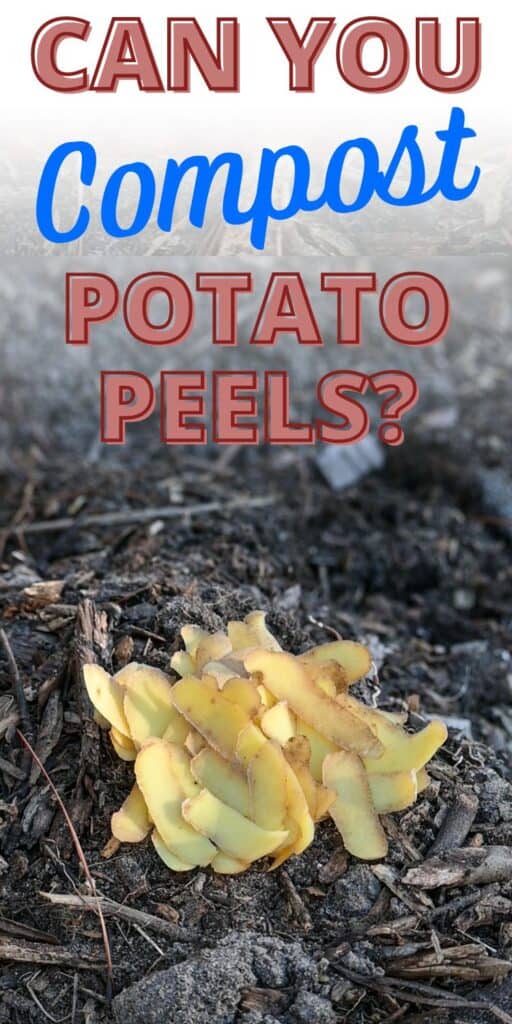
Precautions with Potato Skins in Compost
Be mindful of the potential issues when adding potato skins to your compost mix. Potato skins, and potatoes, contain solanine. This is a natural toxin. This compound can potentially inhibit the growth of microbes, which are the workhorses in breaking down organic waste into nutrient-rich compost. (source) If the peels in your compost contain high levels of solanine, they might slow the composition process, making your compost less effective. Too many potato peels at once coudl also cause problems.
Another consideration is potato blight, a fungal disease infamous for causing the Irish Potato Famine. This blight can cling to the potato skins in the form of fungal spores. When these infected peels are added to a compost heap, particularly a cold composting system, there’s a chance the spores might survive. They can then be spread to your garden soil when you use the compost, posing a risk to your future potato crop as well as other nightshades like tomatoes and peppers.
To minimize these risks, avoid tossing in peels from store-bought potatoes or any with green discoloration, signaling high solanine content. Wnat to know more about potatoes and potatoes and their natural toxins? Be sure to check out this post on why potato leaves aren’t edible.
Also, always aim for a hot composting method where higher temperatures can help neutralize solanine and destroy harmful blight spores, ensuring your garden reaps all the benefits of your composting efforts without unintended harm to your plants.
As an added bonus, hot composting is faster than a cold, mouldering heap.
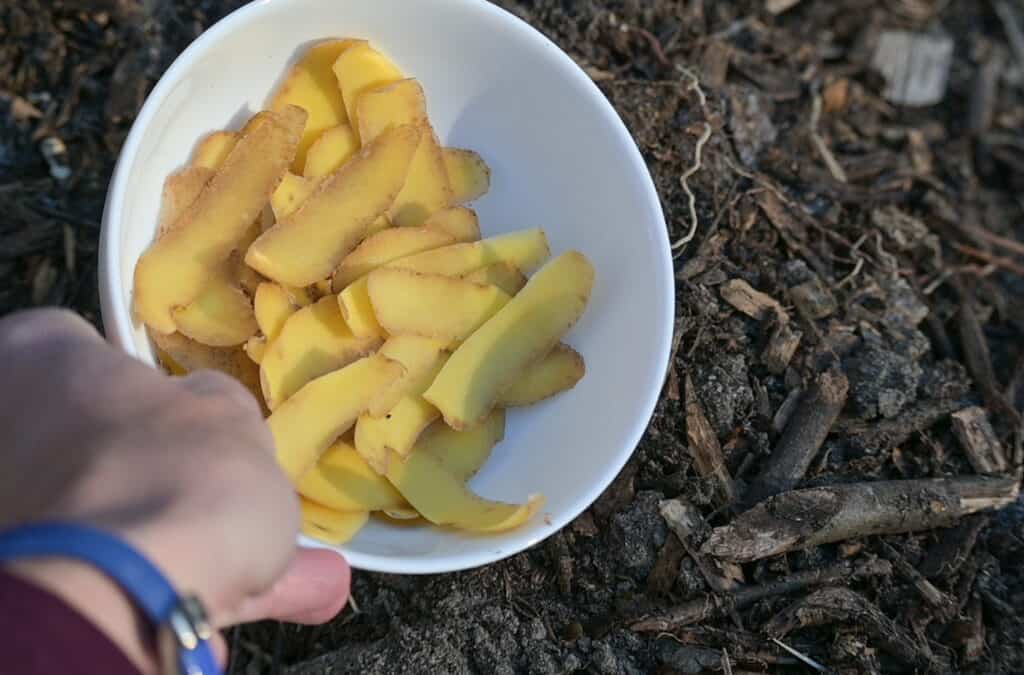
Feeding Potato Skins to Worms: Yay or Nay?
You might wonder if those potato skins left over from last night’s dinner can go into your worm bin. Well, it’s a bit of a tightrope walk. On one hand, worms gobble up kitchen waste with glee, but they also have some no-nos, and potato peels can sometimes be a guest that overstays their welcome.
Potato skins contain solanine, a natural toxin found in spuds. This can slow down your little decomposers. Green skins or potatoes with eyes are likely to have a higher solanine content.
So, how do you sidestep these slippery slopes? Some people say you can freeze your peelings before introducing them to your bin. I haven’t found solid evidence that freezing breaks down solanine in a meaningful way. Cooking barely changes solanine content – it is stable until above 200ºC.
The best ideas is to practice moderation – a sprinkle of peels here and there won’t hurt. Just give your wormie squirmies small amounts of potato or potato peel at at ime adn they’ll be fine.
I haven’t been able to find research addressing whether earthworms neutralize potato blight, but they do neutralize other potential pathogens in soil and compost (source).
Remember, keeping your bin balanced with a mix of greens and browns ensures your worms stay happy and your compost healthy. Those peels can become part of the cycle, but like all good things, it’s best in small, considered doses.
Cultivating Your Compost Wisdom
You’ve jumped into the world of potato peel composting and unearthed a wealth of knowledge. Let’s sift through the soil and recap the golden nuggets you should pocket.
First off, yes, you can add potato skins to your compost pile, but with a mindful approach. Chopping them into fine slices will help them break down speedily, blending seamlessly into the rich organic mix you’re brewing. This is generally true for all of your food scraps, not just potato scraps. When you cut them into small pieces, they compost more quickly.
Remember the cautionary tales of solanine and potato blight. These are real concerns but don’t let them deter you. Unless you’re cooking up a church potlock batch of potato salad every day you’re unlikely to add enough solanine to a home compost pile to do real damage.
Balanced composting practices, like mixing in plenty of green matter and ensuring a hot heap, can keep trouble at bay. In your worm bin, dole out potato peelings sparingly, offering themto your wriggly friends as more of a treat than a staple.
Now, take your composting craft to new heights, with a sprinkle of wisdom and a generous serving of patience. Revel in the satisfaction of turning kitchen castoffs into black gold that invigorates your garden.
Let those potato peels go full circle from food to fodder, feeding the wonderful cycle of growth and regeneration in your backyard ecosystem.\
Compost Tips
Do you know how to tell when your compost is ready to use? And how long does compost take, anyway?
You know your compost needs to be turned, but you're tired of breaking your back. Discover the best compost aerators to make aerating your compost easy.
Discover how to attract more earthworms to your garden for healthy soil and bountiful yields.
Natasha Garcia-Lopez is an avoid home-gardener and proud owner of 88 acres of land in rural West Virginia. She was a member of the Association for Living History Farms and Agricultural Museums for many years and is currently enrolled in the Oregon State University Master Gardner Short Course program so she can better assist you with your gardening questions.She holds a certificate in natural skincare from the School of Natural Skincare.

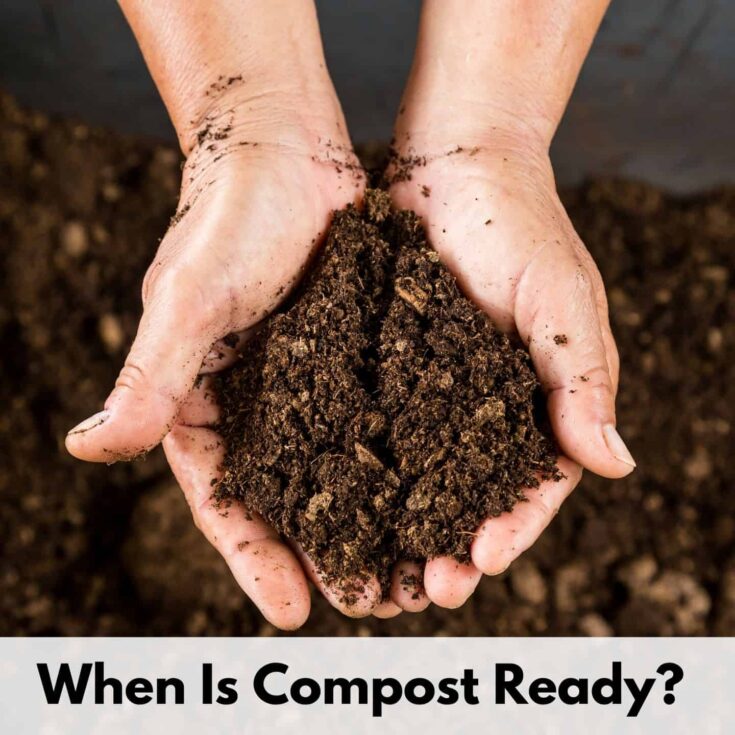
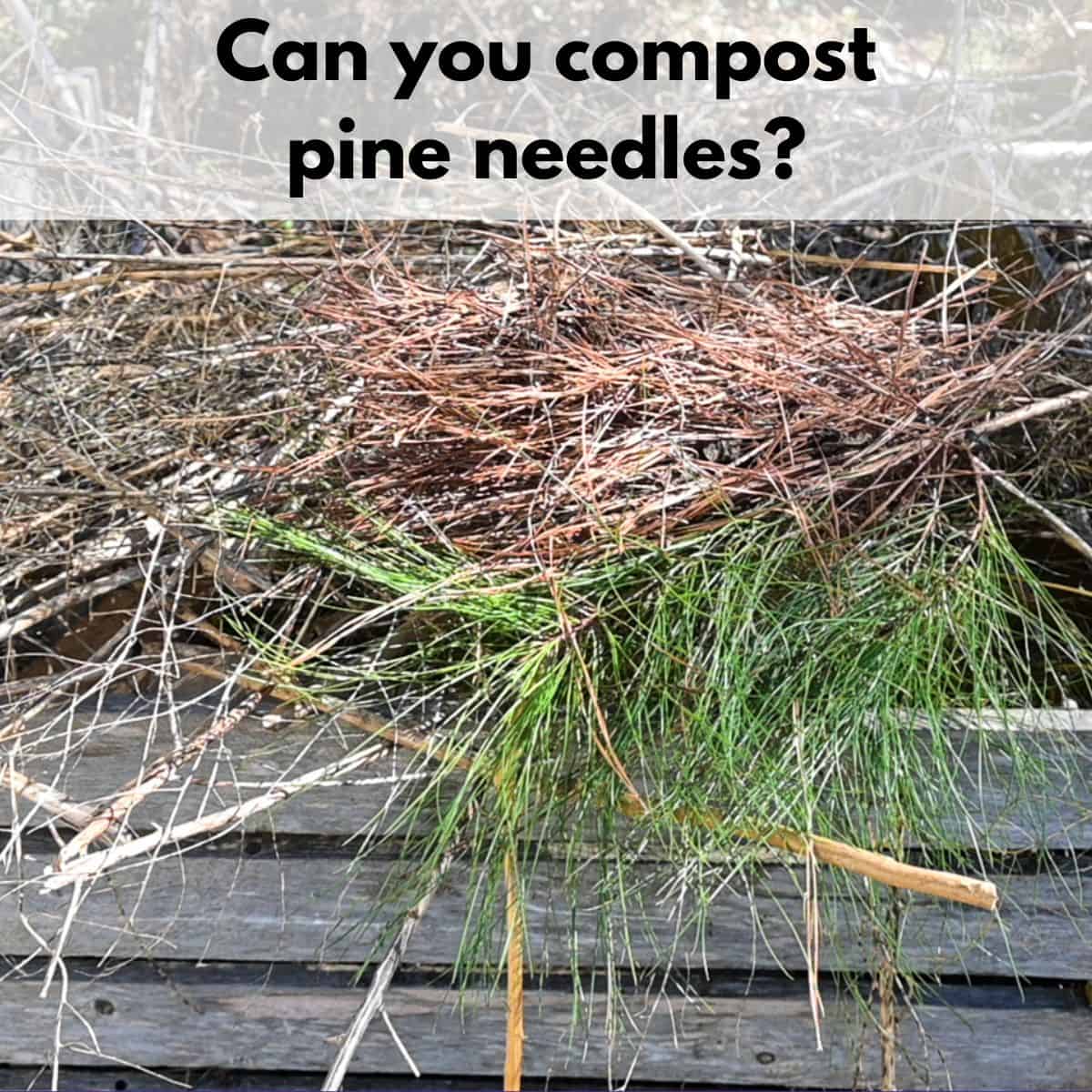
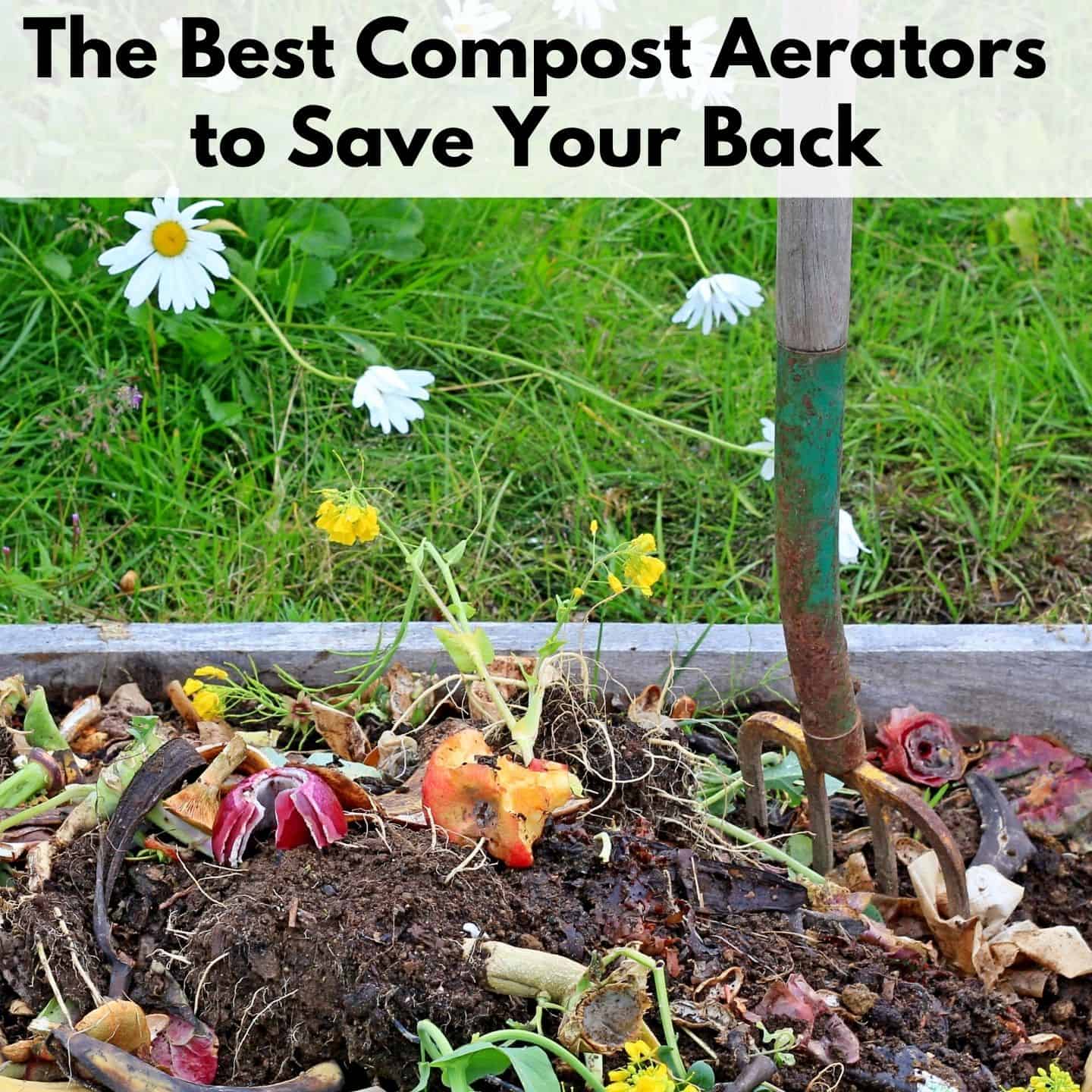
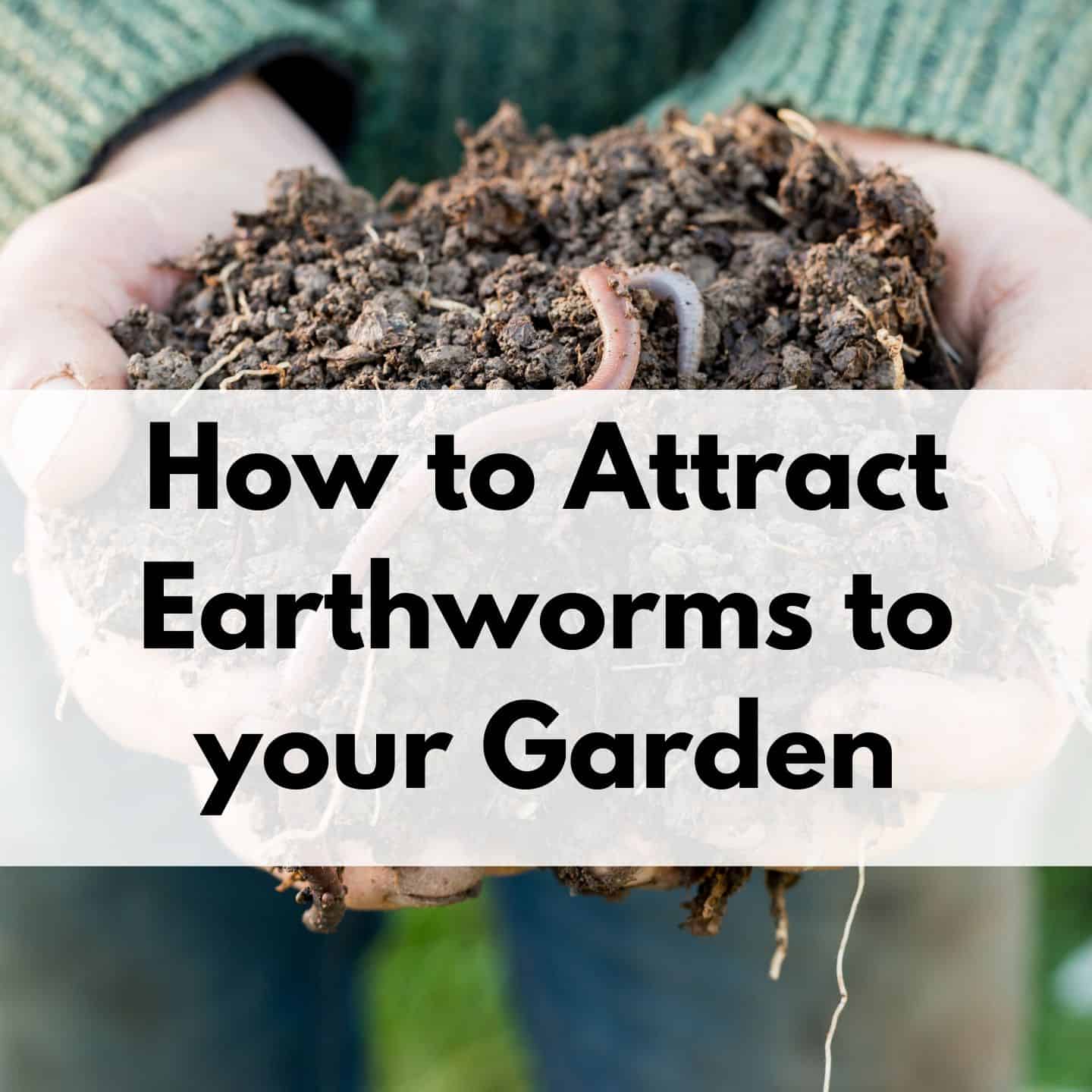

Leave a Reply